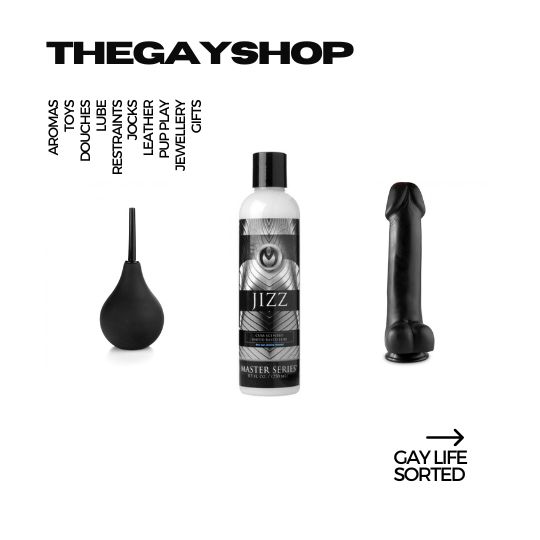As more and more countries work to make PrEP (Pre-Exposure Prophylactic) available for an affordable price, we thought it would be a good time to look at the pros and cons of people taking PrEP. But first, let’s cover the basics for those who don’t already know what PrEP is.

PrEP is a drug that people who are HIV- can take in order to prevent HIV infection. It is important to note that PrEP is not a vaccine against HIV, meaning that if you stop taking the pills they stop protecting your body. It is also not a cure for HIV. People who already have HIV use similar medication in order to keep the virus in check, or at an ‘undetectable’ level.
There is a lot of recent research into the effectiveness of PrEP, mostly because each country’s government that has looked into the drug has run its own tests. In some cases, this has been the cheapest way for people to obtain PrEP, as study participants obtain the drug and associated tests free of charge. Below we’ll look at five things you should know about when using PrEP.
You should get tested for HIV and other medical conditions before starting PrEP.
It is also important to note that the required testing that should take place before and during the administration of PrEP are important. Firstly one should be tested for HIV to make sure that you are HIV negative. Taking PrEP while HIV+ may cause mutations of the virus that become resistant to PrEP. Markus Feser who works with Hamburg-based HIV community action group Hein & Fiete remarks that it is also important to have a general check-up before beginning prep, as it is possible that taking PrEP for extended lengths of time can lower your bone density. Other side effects may also include headache, abdominal pain, decreased weight, nausea, and diarrhea. Less common side effects include lactic acidosis, liver dysfunction, and worsening of Hepatitis B infection. Recent studies have shown that there is no issue taking PrEP in conjunction with Hep B medication, however.
PrEP might not be your best solution.
You might hear things like ‘everyone should be on PrEP’ but this might not actually be the case. Most community action groups, and the doctors at 56 Dean Street, advocate a more measured approach to the uptake of PrEP. While PrEP is the latest defence against the rising number of HIV infections, it is not the only defence. There are of course people who prefer to use condoms as their prophylactic of choice, and decide not to use PrEP. For others who are not yet sexually active, or are only sexually active with one committed partner, there is no need to take PrEP. Likewise, if you are only having sex with someone who already has HIV but is undetectable, there may also be no need for you to take PrEP. If you fall into the category of people who have sex with multiple partners, has sex in high-risk situations (chem-sex, bareback, darkrooms etc.) then you may want to take PrEP regularly.
You don’t have to take it every day.
Purchasing PrEP is often an expensive prospect – which is why participating in a study is the way that many people can afford to be on the drug. But recent studies presented at the European AIDS Clinical Society 2017 Conference in Milan that show that taking PrEP on an as-needed basis, two to twenty-four hours before sexual activity and daily until two days after the last contact, known as the ‘event-based method’, or taking the pill 4 days a week: on Tuesday, Thursday, Saturday and Sunday; known as T’s and S’s are also effective ways to protect yourself against HIV infection. This new information, along with grey-market ways to obtain the drug, have made taking PrEP a more affordable prospect. In the UK up to a 3-month supply can be ordered online without a prescription from various websites, for those in Continental Europe, many of these same websites deliver directly to a few countries. If your country isn’t in the delivery lists, some will deliver to a middle-man delivery company who will then deliver onward to you. These orders will often incur import/VAT duties when arriving in the UK, and middle-man companies will charge a fee to forward the delivery. From my own experience, this makes the pills about 50€ per month, if taken every day. Obviously, this cost can be brought down if using intermittent methods.
There are good reasons to take it.
If you’re like me, you think that sex without condoms feels better. I usually don’t enjoy sex with a condom – if I’m the top – and quickly lose my erection while putting a condom on (though I have other pills to help with that now too). I often have sex in club darkrooms, when I’m heavily under the influence of various things, and not asking about my partner’s sexual history, and I often don’t carry condoms at all, though I use them if I’m asked to by my partner and he has them. In these situations though, knowing that I am on PrEP means that I don’t have to be concerned about what I have done, or what I might have done that I have forgotten about during the party. The official line from most doctors and activists is that PrEP should be used in conjunction with condoms, as a safety-net in case the condom breaks or something else goes wrong. In these cases, PrEP provides a way of knowing for sure that you’ll be safe from HIV infection when having high-risk sex.
It doesn’t protect against other STIs.
An important thing to remember about PrEP is that it is only a preventative against HIV. It doesn’t offer any protection against other transmittable STIs. For this reason, many people choose to use condoms to prevent against other STIs when having sex. Whether you take PrEP as a preventative against HIV or not, if you are having sex in high-risk situations, you should make sure that you are being tested regularly. Since the introduction of PrEP around the world, many areas have reported that HIV infections have fallen, including London, New York, and New South Wales. While HIV tests have remained steady, new HIV infections have dropped in places where PrEP is readily available. This is not only attributable to PrEP, as better HIV medications mean that those living with HIV are undetectable and so cannot pass on the virus to sexual partners. Here’s a side benefit: because PrEP users are encouraged to get STI tests regularly – every three months – rates of other STIs, particularly gonorrhoea, are also falling as people are having them treated more quickly. This may also be due to better health information people who aren’t on PrEP are also getting tested more frequently.
When you’re deciding whether PrEP is right for you, there are plenty of places to find more information. London clinic 56 Dean Street have a helpful series of YouTube videos which outline some of the points made above.
If you want to get PrEP, and you’re in London, you can visit 56 Dean Street clinic, 10 Hammersmith Broadway, or Homerton clinics. The NHS Impact trial has participating clinics all over the UK. Click the link to search for a clinic near you where you can take part. Participating in the trial is free for those who are selected to take part. 10,000 participants are required for the trial, with clinics already open, and others opening intake soon.
For those unable to participate in the trial, or who are able to pay for PrEP themselves, check I Want Prep Now.co.uk to find out where to purchase it online. If you’re in the Republic of Ireland, a website has been set up to help you obtain PrEP online.
If you’re in mainland Europe, Dynamix can also provide tested and proven PrEP, delivered to the UK and Europe. If you live in a country where you cannot get PrEP delivered directly, such as Germany, Dynamix will deliver to a middle-man delivery company such as Borderlinx who will pass the delivery on to you for a fee. This is the process I use, and Dynamix and Borderlinx have not contributed to THEGAYUK.com for this referral.
Readers in Barcelona can now contact the first European community PrEP centre to get advice and support while considering or taking PrEP.
As with any medical treatment, you should always consult with your doctor, and make sure you make the right choices for yourself.



